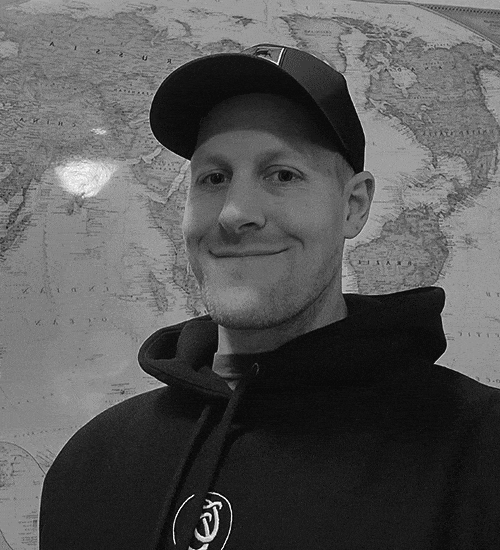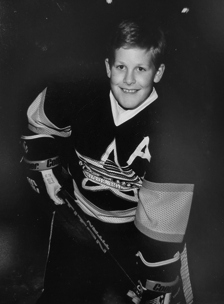The Architect of The Brand:
Matt Hardy

Most people view who they are through the lens of the question, “And what do you do?”
But for many of us, answering that question doesn’t come close to fully explaining who we are.
Especially any of us creative types.
Because as creative people, our professional journeys often involve playing a variety of roles and taking on many different projects and responsibilities.
So who we appear to be at any given time often changes to reflect the different seasons of life we're in.
For myself, I’ve found that so often, my life seems to have been punctuated by events and undertakings that have required a lot of hard work and resilience.
As such, when writing this section as The Architect of The Brand, I’ve divided my experiences into different sections that have been fairly constant throughout the whole journey.
At least up until this point.
I’ve always been a voracious reader, and over the years, that’s translated into writing.
I’d say that I’ve often felt compelled to write, as opposed to having a specific love for writing itself.
The process often starts with a unique thought or discovery that gets recorded for future reference.
From there, the idea may stay archived in a journal, or it might evolve into something bigger… where curiosity sets in, and I follow the idea down the rabbit hole.
One example would be how I played the architect in designing, writing, and assembling the story about the CC brand.
I was wondering if I could pull together a few of my varied interests into one arena, using a story to connect them so I could document and share some of the things I’ve learned in my travels along the road of life.
I thought it would be an interesting experiment to see if I could fuse different elements (physical products, digital products, web documents, pictures, websites, email, web-based tools, news articles, historical facts, etc.) together within a fictional story to give it a life of its own while lending a certain credence and backstory (albeit fictional) to the CC brand itself.
As I will offer various different physical products through the Cowboy Customs website (which may not be directly connected back to the story itself), I realized this site could function on its own—independently from the story and fictional world I created.
By doing this, people could engage directly with CowboyCustoms.co itself, or they could find their way to it through the fictional world on the story section (titled "World Of The Brand") of ForThoseWhoWearTheBrand.com.
Either way, I felt that people could engage as much or as little as they like.
This all came about because I was wondering what a brand really is.
After all, there’s a huge spectrum.
From mega-corps with billion-dollar ad budgets to independent people pushing their own products on social media.
I thought it would be an interesting experiment to create a brand that reflected the principles & ideals that I value ...using the skill-set I have right now.
If you’d like to join in and experience the experiment firsthand, you can do so here.
- In creating this, some of the work I did included:
- developing all graphics (social posts, pictures for the story etc.)
- designing and getting all products on Cowboy Customs ready for manufacturing
- coding and designing all related websites (Continental Capital, Cipher Corporation, Cowboy Customs, Cahills Cellar, Citadel Contracting)
- character, plot and story design (including researching & linking to external true stories that happened during the same time period of time that the story was set in)
- development & coding of forthosewhowearthebrand.com including the sign up & referral system, alternative story outcomes and calculation based on choices the reader has made
- creation of the Capitals Catalyst daily email newsletter that provides the top market related headlines for the trading day as well as the latest stock that social media users are talking about
- the writing & creation of additional trading & information products referenced throughout the story including: The Office Worker's Survival Guide, Continental Capital Internship Training: Stock Trading, Betting With An Edge: Insider Secrets From A Pro Bookie
Overall, I did about 90% of the work and hired others along the way to help along the way where needed for things like: tweaking or securing code, formatting images or performing edits on some of my writing.

Like many other Canadians, I grew up playing hockey.
Unfortunately – unlike so many other Canadians – I got a late start at age 8.
I still remember going to my first week-long conditioning camp.
I could barely stand up on skates, but it didn’t stop me from going.
I finished EVERY drill well behind everyone else, and my feet were one big blister after the first day.
I remember how hard they worked us with 2 on-ice sessions and dryland training in between.
Even though I was obviously in over my head, there was no quarter given.
Not that I would have asked for it.
Seeing how rough I had it, my dad said I could quit if I wanted to…but I was determined to see it through.
No matter how badly my feet were blistered, my muscles ached or how far behind everyone else I was, I wasn't going to quit.
And so began my 15 years of playing.
Up until age 17 I played minor hockey, and then when I was cut from Junior B I went on to play premier men’s league hockey.
The off-season was always spent playing hockey, running, and lifting weights.
And once I stopped playing three to five times a week with minor hockey, I took more of an interest in lifting weights.
Here are some example videos dug out of the archives showing me lifting in my parents basement back in the day…
This was an early attempt at the lift, a few months later I was squatting this for 3 reps.
Here you can see the bar slipping out of my hands and having to adjust part way through the
lift. For the last 5 reps I started using lifting straps.
This was the one and only time I moved this weight.
Dips with this weight was standard practice for quite a while towards the end of my heavier
lifting days.
Calf raises …sure, I did some. Nothing to write home about.
My lifting consisted of heavy reps, partial reps and negative reps.
Sometimes the weight moved a lot, sometimes just a little, and other times it didn't move at all.
But if it didn't move how I wanted, I hit it that much harder the next time around.
All of this translated into lifting three to four times a week—every week—until I hit my max lifts at age twenty-two.
At that point, it was either make lifting more of a priority to continue improving or call it good.
During the time I made those lifts I had a pinched sciatic nerve in my back (probably from the pendulum effect of the extra weight I added 🤔), and I could feel the tendons in my triceps and shoulders wanting to snap.
I figured that if I wanted to progress further in my lifting, I’d have to start from scratch and make sure my form was rock solid before chasing heavier weights.
But as I wasn’t getting paid to do it, I figured the risk of injury wasn’t worth it.
Don’t get me wrong, it’s awesome to lift heavy …but the awesomeness would evaporate pretty quickly if you blew a disc, snapped a tendon, or tore a muscle.
I decided to shift to lifting slightly lighter weights.
To that end, though, lifting weights and training has been something that I’ve done fairly regularly, even to this day.

